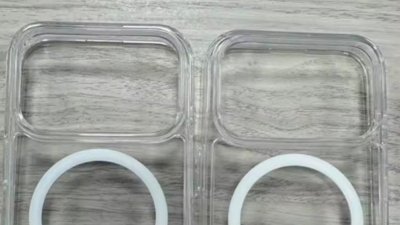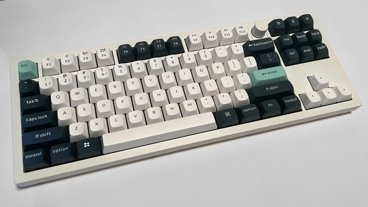Apple iPod chief Tony Fadell has develop a collapsable hardware solution that would allow his company to reduce shipping and packaging costs by selling software on smaller discs which could then be used in slot-loading optical drives built for standard 12 cm CDs and DVDs, a new filing has revealed.
Software is traditionally shipped on the 12 cm discs, but many applications exist today that require less storage capacity than what is available on the those discs, the filing adds. However, slot-loading drives found in notebooks and car audio systems are only designed only to accept 12 cm discs.
"In such situations it would be advantageous to use a reduced diameter (lower storage capacity) disc," Fadell explained. "Such advantages include reduced shipping costs, reduced production costs, etc."
The iPod chief pointed out that one currently available solution to using reduced diameter discs in slot drives is that of a rigid adapter that when used in conjunction with the reduced diameter disc enables a disc player to accept and play the reduced diameter disc.
"However, this solution does nothing to reduce shipping costs since the rigid adapter (with its larger footprint) must be shipped with the reduced diameter disc and therefore a standard sized shipping container must be used to accommodate both the rigid adapter and reduced diameter disc," he wrote. "What is needes is a cost effective method and apparatus for shipping reduced diameter discs that assures the end user will be able to use the reduced diameter disc in a slot drive designed exclusively for a standard diameter disc."
Therefore, Fadell's invention calls for a "compactable memory disc adapter" that can be shipped in a compact form and expanded by the customer once extracted from the retail packaging. It could then be fitted around the edges of a 8cm mini-disc, effectively allowing for the reduced diameter disc to play in a slot interface designed exclusively for standard 12cm diameter discs.
Such an adapter can exist in more than one form, the iPod chief goes on to explain. One method includes two separated portions that are mated together via a locking mechanism to form the expanded adapter.
"For example, such a locking mechanism can include tabs that when mated with corresponding tab receivers form the expanded memory disc adapter," he explained. "Again it should be noted that such an embodiment could be implemented with any number of portions and corresponding locking mechanisms along the lines described above. It should be noted that when in a compacted configuration the portions are stacked one atop the other in such a way as to have a reduced footprint."
Another method for construction of the disc adapter could include portions that are coupled via foldable joints. Under this method, the portions are folded apart in an unfolding operation using the foldable joints.
"It is contemplated that the unfolding operation can be either a manual unfolding operation whereby the portions are unfolded by way of an externally applied force or an automatic unfolding operation whereby the portions are unfolded due to the release of unfolding energy stored in the joints," Fadell wrote. "In the automatic unfolding operation, the portions are (in the compacted configuration) held together in spite of the unfolding energy stored in the joints by way of a clip or other such device (not shown)."
In order to achieve the expanded configuration under the aforementioned method, the clip is released and the unfolding energy stored in the joints would then forces the portions apart, forming the expanded adapter. In order to return to the compacted state, the reverse process would be followed whereby an amount of energy commensurate with the unfolding energy previously stored in the foldable joints is applied.
 Katie Marsal
Katie Marsal


-m.jpg)






 Malcolm Owen
Malcolm Owen
 Andrew Orr
Andrew Orr
 William Gallagher and Mike Wuerthele
William Gallagher and Mike Wuerthele
 Christine McKee
Christine McKee

 William Gallagher
William Gallagher




-m.jpg)






72 Comments
A PATENT FILING?!?!?! I own one of these. Companies made them like 15 years ago.
Oh ... they're talking about a foldable/expandable one. I have to imagine these kinds of things would produce horrible vibration in today's much, much higher speed drives.
Why not just make foldable discs?
I own one as well.. from around 1988??
how about just using the same design of drive thats in the Wii it takes the smaller discs and is a slot loader.Funny, when I read the headline I thought they were gonna put a minidisc(tm) drive in the machines!
This story has nothing to do with mini-discs whatsoever.
The first one I had was Nine Inch Nail's Broken album. It had a minidisc along with the main CD.
Anyway, I don't think a folding ring is a smart move. It adds an extra part and that could be broken or lost and that is not often used. Why not just engineer the drive inject/eject motor to work with smaller discs?
Nintendo already has such technology for the Wii, allowing GameCube disks to be used. Maybe Apple could license the same technology or get their driver supplier to license the technology?